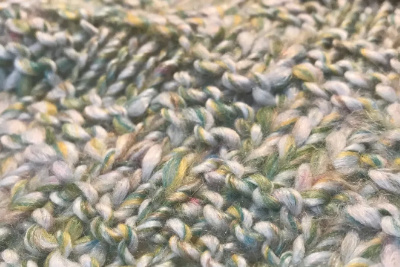
The market trend of polyester filament is on the rise. When will the textile market usher in a turnaround?
Recently, with the gradual loosening of restrictive measures in European countries, although export inquiries have increased, the actual order has not arrived as scheduled.
Release time:
2020-05-13
Recently, with the gradual loosening of restrictive measures in European countries, although export inquiries have increased, the actual order has not arrived as scheduled. And the risk of polymer infection after unblocking is not ruled out as an upward trend, which may lead to some countries prolonging the ban time. In the case that the global crisis has not been fully beneficial, the "spring" that the textile and apparel industry expects may still Waiting for it to arrive.
One. Looking at the cost of raw materials: Active oil rigs in the United States have decreased for eight consecutive weeks, and major oil-producing countries in the world have reduced production. Oil demand has gradually recovered as the blockade is lifted, and international oil prices have risen again. WTI 06 contract 24.74 rose 1.19 USD / barrel; Brent 07 contract 30.97 rose 1.51 USD / barrel. The downstream polyester production started to maintain a high level, and the domestic polyester comprehensive load was stable at 85.27%. Since the end of April, the inventory of PTA factories has shifted to polyester factories and traders, and the inventory has slightly decreased. Since May, polyester factories have demand for restocking, and raw material inventories have moved up slightly. According to the statistics of Longzhong Information, PTA factory stocks for 7 days this week; PTA raw material stocks for polyester factory are around 9 days. MEG accumulates slowly in May, and when the cost side increases, there is a short-term upward trend. At present, the domestic ethylene glycol operating rate continues to be low, which is beneficial to the supply side.
two. The price trend of polyester filament yarns: polyester filament yarns in Jiangsu and Zhejiang showed an upward trend, but most enterprises still choose to maintain stable operation, and local quotations have room for downward adjustment. Following the 2-3 days of polyester yarn volume at the end of the month, the May 1st Holiday was stimulated by the increase in crude oil and the benefits of unsealing in Europe and the United States. Recently, the daily production and sales of polyester have fallen to a low point again. However, the company's willingness to ship is strong, and some discussions have been loosened, but the trading is quiet this weekend. At present, Zhejiang local POY150D / 48F negotiation reference 5250-5350, FDY150D / 96F negotiation reference 5850-5950, DTY150D / 48F negotiation reference 6900-7000. (Unit: Yuan / ton). Jiangsu currently refers to 5500-5600 for POY 75D / 72F, 6100-6200 for FDY 75D / 72F, and 8100-8200 for DTY 75D / 72F. (Unit: Yuan / ton). The prices of polyester filament yarns in South China rose slightly, and after the downstream purchases were needed at the beginning of the month, the current trading atmosphere in the market was deserted. At present, Fujian polyester yarn POY75D / 72F negotiation reference 5400-5600, FDY55D / 36F negotiation reference 6400-6600, DTY75D / 72F negotiation reference 8100-8300. Unit: Yuan / ton.
three. Production and sales of polyester filament factory: Since May 1st-May 5th, polyester filament production and sales have been in the position of 50% -60%. The price of crude oil rose on May 6th, and the double raw materials fluctuated and rose, supporting at the cost end The polyester filament yarn enterprises reported an upswing, and the terminal moderately filled the position. The factory's mainstream production and sales on that day were 150.4%. After the terminal in the previous period, the factory's polyester yarn rose faster, triggering downstream resistance, and the overall transaction of polyester yarn declined, falling to 29.20% last week. The inventory of polyester yarn decreased slightly, but the number of days of decline was negligible. FDY destocking is relatively low relative to POY and DTY, but overall the inventory is still high.
four. Judging from the operation of downstream terminals: the comprehensive start-up rate of texturing machines in Jiangsu and Zhejiang is 67.6%, up 1.9 hundred points from the previous month. The comprehensive operating rate of chemical fiber weaving was 58.63%, an increase of 7.44 percentage points from the previous month. The average level of finished inventory of terminal weaving products was 44.0 days, a decrease of 2.0% from the previous month. Recently, the overall sales situation in the domestic market is improving, and the export market is picking up slightly. Part of the notice of the EU ’s early extension of orders can resume production, and the overall inventory level of the industry declined slightly. Up to now, the mainstream inventory level of the industry is 30-60 days, some are higher than 2 months and some are lower than 10-15 days. The average level of raw material inventory of terminal weaving enterprises was 30.6 days, an increase of 9.7% from the previous month. The stocking days of raw materials for weaving factories in various regions are generally 15-30 days, some are higher in 60-90 days, and some are lower in 7-15 days. Another few companies have a clear bottoming out mentality, and the superimposed funds are relatively generous. The stocking amount is about 6 months.
With the current 100-year-old clothing brand announcing bankruptcy and the continued decline of foreign luxury goods sales, some luxury goods companies are pinning their hopes on China. It can be said that their fate depends largely on China. According to McKinsey's research report, Chinese consumers' luxury consumption is at a growth stage. However, when the global crisis has not been completely lifted, we must always worry about the possibility of a second outbreak of the crisis. At the same time, it takes a long process to actually place orders into the market.
Latest Blog





